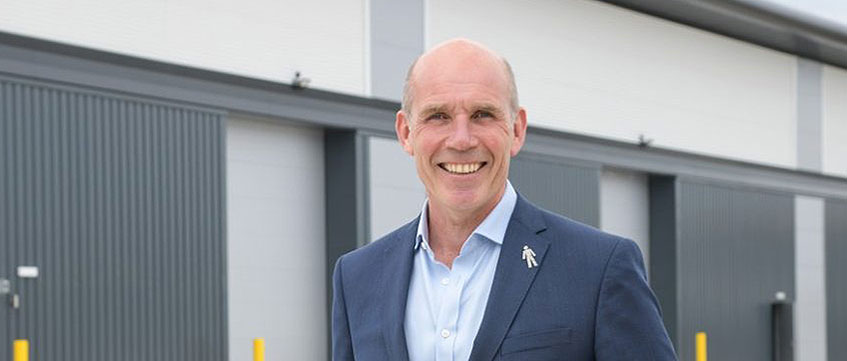Two years ago everything seemed so simple for the industrial market: build the shed, let the shed, sell the shed for an eye-wateringly low yield, repeat.
But now the picture is more complex, according to FHP co-founder and director John Proctor. Not only did the logistics goldrush push the sector towards overcapacity, but hesitancy has crept in thanks to that old foe: events. The Liz Truss Budget and wars in Ukraine and the Middle East have rocked the money markets, and this has, in some ways, turned the industrial sector on its head.
Looking back on what he semi-ironically calls “the crazy days”, Proctor reflects on the ready availability of money and the potential problems it stored up for today.
“Where we are seeing more hesitation than we would like – if I’m brutally honest and if we’re all honest – is in the size range 100,000-350,000 sq ft,” he says. “We saw the funding being introduced regularly on a speculative basis, so we probably have a few too many units in this size range empty rather than full and we are chasing the market a little bit in that area.”
But activity is hotting up in the smaller end of the market since the start of the year. Within Proctor’s East Midlands patch, he reports strong demand for units up to 50,000 sq ft, with a number in the process of going under offer, while demand is also apparent in the 50,000-100,000 sq ft range.
Last week Proctor was named EG’s Dealmaker of the Month for February, with his 116,000 sq ft of disposals (let or sold) outperforming anyone else on the EG Radius Rankings. His largest deal was Noble Foods taking 70,000 sq ft of manufacturing space at Oak Spinney Park, near Leicester.
Recent conversations with industrial developer Panattoni and London agents have persuaded him this is part of a broader trend. “We are hoping that the stimulus at the smaller end, where the boardroom is more fleet of foot and quicker to make decisions, is a demonstration that the market confidence is there, and the supply and demand dynamics are still not such that we’ve got a huge amount of stock in the market.”
As for the next deal drivers, Proctor believes it is hard to underestimate the impact ESG will have on the industrial sector. A recent meeting with NatWest struck home to Proctor how ESG goes way beyond the traditional worlds of landlords and tenants. “ESG is top of their agenda,” he says. “So if anybody wants to buy a building and get finance, unless they can prove that it will satisfy the statutory needs of energy performance criteria, then they will not land.”
Proctor welcomes the tipping point ESG has reached: “We have gone from thinking it’s that little bit of a coloured bar on the fridges that we’d take no notice of to actually realising ‘yeah, we need to take this seriously’. And we all should take it seriously.”
Demonstrable business cases can be built around it, Proctor says: “We are looking to put together packages where you can pay a rental for the provision of, for instance, solar. So whereas previously it would be nice to have it – there’s a bit of solar which is a token gesture to get a tick in the box – people are now looking at it properly and analysing it properly, both landlords and tenants, and tenants are prepared to monetise that in terms of paying rents against savings they would get.”
The way Proctor sees it, logistics may not be the golden goose it was, but the broader industrial sector is looking ahead with quiet confidence to a future where units sizes may be leaner, but they will also be greener.
Send feedback to Jim Larkin
Follow Estates Gazette











